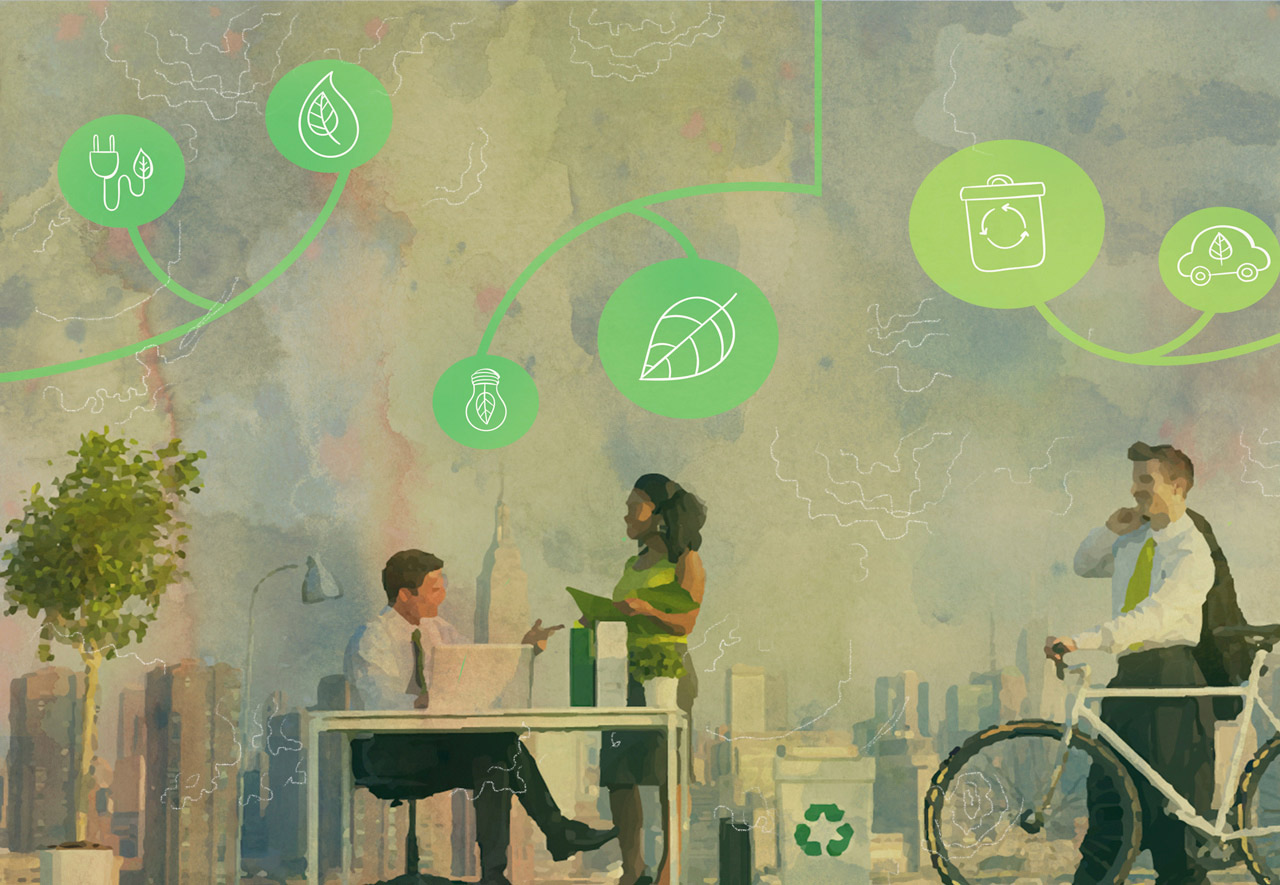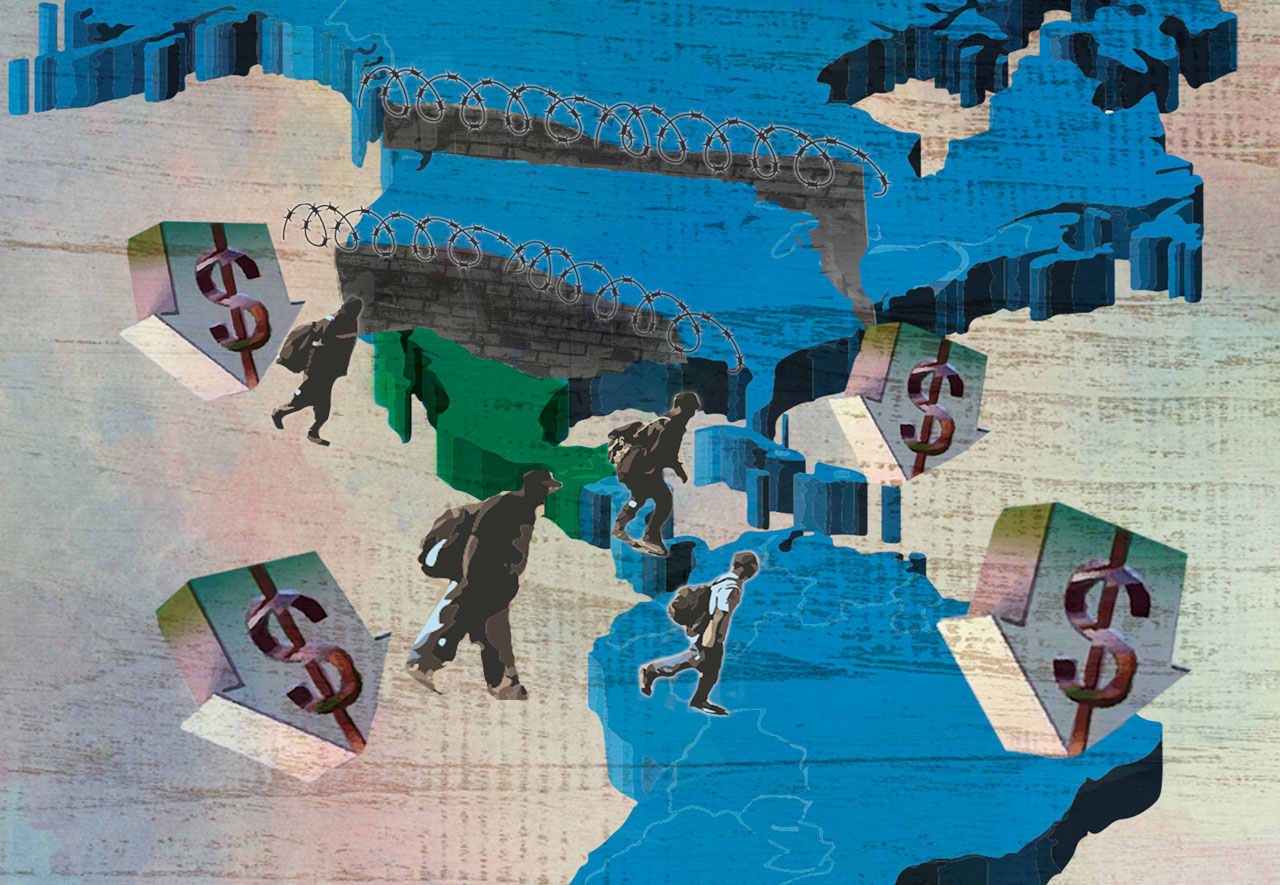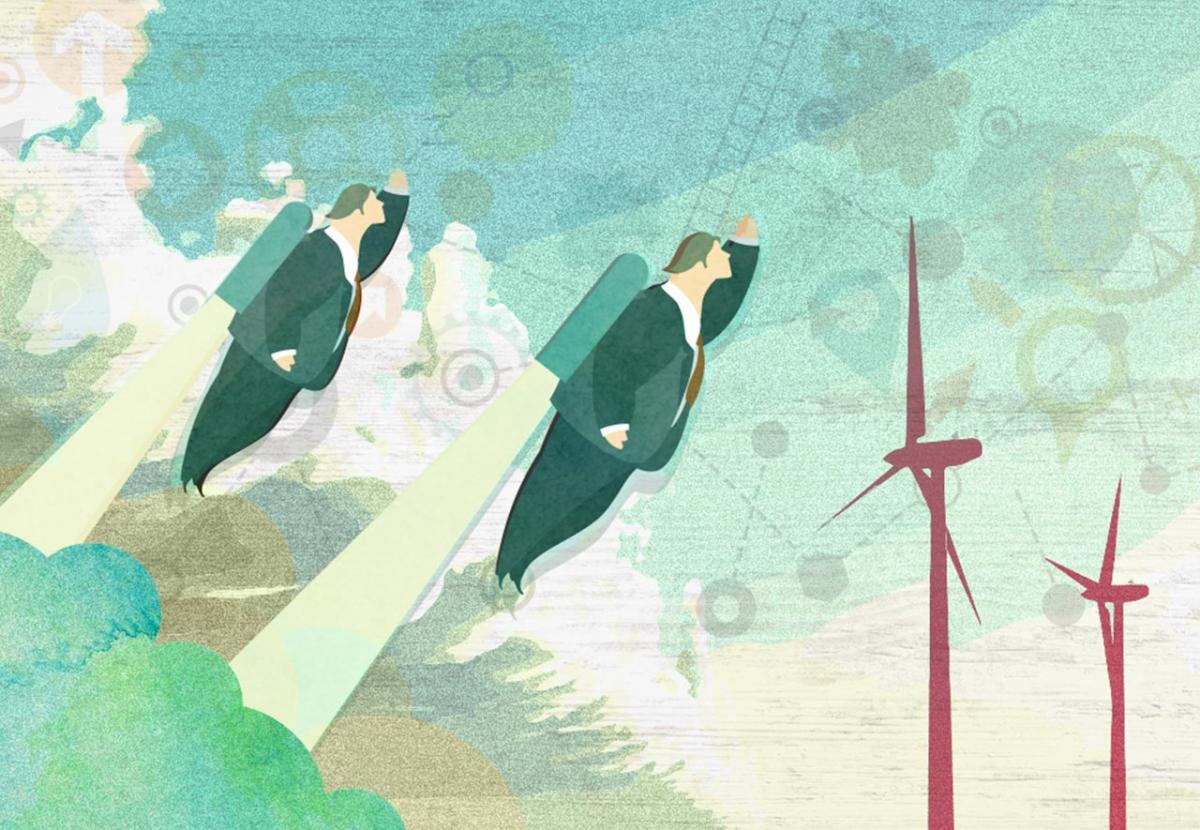The issue of sustainability has captured the attention of the media, of governments and of a growing number of executives who trumpet the sustainability initiatives of their companies. For many people, however, sustainability is seen as another feel-good catchword for the save-the-planet types. In the business world, most employees are unimpressed by declarations from the C-Suite on the importance of sustainability. For these employees, the noise around sustainability is an attempt to jump on the corporate social responsibility bandwagon. They fail to see the relevance of sustainability to the success of their companies — and they see even less relevance in their own day-to-day jobs.
One business school centre is trying to change this mindset through an innovative online training program that not only makes the business case for sustainability — how it impacts a company’s results — but also links sustainability to the success of every function within a company. Whether they come from marketing, human resources, operations or any other major function of a business, participants learn how sustainability applies directly to them.
The creator of this online program is SUSTENTUS, a centre for corporate sustainability and social entrepreneurship at the EGADE Business School in Monterrey, Mexico. EGADE, which is affiliated with the Monterrey Institute of Technology and Higher Education (ITESM), has been a pioneer of CSR and, more recently, sustainability initiatives for the past 16 years. Its SUSTENTUS centre, launched in 2009 with major sponsorship from Mexico’s Femsa Corporation, has a variety of programs and activities — from research to consulting to executive training — designed to advance knowledge about sustainability and corporate social responsibility.
The online program, called Creating a Culture of Sustainability, was launched in July 2015. SUSTENTUS had been working on the program for two years prior to the launch. The idea for the new program emerged from the many corporate connections of the centre. The leaders of SUSTENTUS — including founder Gerardo Lozano, who brought corporate social responsibility studies to EGADE when he arrived in 2001 — saw in many companies a gap in terms of sustainability training. With further research, Lozano and his team determined that most sustainability managers did not have the resources or capabilities to train thousands of employees in sustainability — especially when most of those employees were not convinced that sustainability was even an important issue.
Overcoming Misconceptions
The ambitious goal of Creating a Culture of Sustainability — which costs from $1400 to $2200 Mexican pesos ($75 to $120 USD) per employee depending on whether the company enrols 30, 60, or 120 people — is to help employees develop specific ideas for how they can apply the principles and goals of sustainability to their jobs. The first step in the program, however, is to overcome the misconceptions and resistance about sustainability that continues to plague the issue. This is no easy task.
As Francisco Layrisse, research and project coordinator for SUSTENTUS, explains, “Sustainability is still a very new area of expertise. It’s been getting a lot of attention because of climate change and environmental issues that have been coming up recently in the news and in the world agenda.” However, he notes, “there is still a lot of misconceptions in terms of what sustainability is and what good it can do to the company. Too many people still think sustainability is something environmentalist fanatics are trying to push forward to save trees and wildlife and so on.”
Horacio Martínez Reyes, sustainability manager at Mexican multinational Alfa Group, notes that even when a company has a culture of sustainability in place, many industrial managers do not realize that their practices are sustainability-related. “People don’t know that what they do benefits sustainability,” he explains. “When we tell them they have to measure this or that, they say, ‘we’ve been doing that for years. You want to call it sustainability, fine, we’ll call it sustainability.’” Along with Femsa, Alfa is one of the highest profile companies to have participated in the course to date.
The goal of the Creating a Culture of Sustainability program, explains SUSTENTUS founder Lozano, is to show that sustainability is not about saving the environment but incorporating new social and environmental variables in your decision thinking processes, which in the medium and long term benefits companies as well as society. Sustainability in this context refers to avoiding causing long-term damage in the interest of acquiring short-term profits.
For Danone subsidiary Bonafont, the number one Mexican bottled water company and an early participant in the course, this responsibility translates into a strategy based on ‘cycles’ rather than the traditional linear approach. As Sofía Díaz Rivera, who leads the company’s plastics cycle function in Mexico, explains: “We need to change the mindset from ‘okay, you’re in a linear economy, you buy, you produce and then you discard,’ into ‘how we can make use again of these things that are discarded and use them again as materials.’” Bonafont sent 30 people to the course as a trial run, and given the positive results, Díaz Rivera hopes more Bonafont employees will be taking the course in the future.
From General to Specific: A Two-Part Structure
To dispel misconceptions and to teach the short- and long-term impact of sustainability, both financial and societal, the seven-hour online course is divided into two parts or ‘modules’: a four-hour introductory module, followed by three-hour modules by ‘profile’.
The introductory module consists of 26 capsules — on average, about eight minutes each — during which participants learn the principles and concepts of sustainability. One capsule, for example, explains the difference between sustainability and corporate social responsibility. As Layrisse explains, “CSR is more simply about the company doing good. Corporate sustainability is a more evolved way of looking at how businesses connect to society and to the environment, while making money, of course.”
Other capsules in the introductory module cover such areas as business ethics, internal and external communication and ISO 26000, the international standard of social responsibility quality.
One very important component of the introductory module, introduced in a two-part capsule, is making the business case for sustainability — a challenge given the difficulty in monetizing its benefits. The returns on sustainability initiatives are more intangible, and determining how to put a dollar value on such intangibles is still a work in progress.
Although developing the business case for sustainability is important, perhaps the most fundamental of the takeaways from the first module is an understanding of the three core principles of sustainability: economic profit, respect toward society and respect to the environment. These guiding principles, which can be synthesized as the three P’s of People, Planet and Profit, capture and summarize the scope and ambition of the sustainability concept.
In the second part of the program, participants are divided into groups based on their functions, including human resources, operations, marketing, supply chain management and finance. Through the 16 capsules of this part of the program, participants can more fully appreciate the specific implications of sustainability on their jobs.
In the operations module, for example, the four major themes are the efficient use of resources and energy, production and distribution, cleaning, waste management and recycling, and environmental care. Discussions in this module thus centre on such topics as greenhouse gases, inventory and lean manufacturing.
The four themes for the human resources module, to take another example, are work and work relations, social dialogue, working conditions and social protection, and worker safety and security. Discussions in this module focus on issues such as discrimination, human rights, and inclusiveness of people with disabilities.
“I like that the course has a different profile for each function in the company,” says Bonafont’s Díaz Rivera. “People can say, ‘What do I need to do in my actual job? How can
I help?’”
Frameworks for Proposals
One vital element of the modules by profile is that participants are required to construct a basic idea on how they will incorporate sustainability within their work. Specifically, participants at the end of the training must develop what SUSTENTUS calls the “framework of a proposal.” This framework of a proposal is more developed than just an idea but is not a full project proposal, which would require many more hours than available in the course.
In the marketing module, for example, one Alfa participant developed a project to specifically incorporate sustainability benefits in its marketing campaigns. Traditionally, Martínez explains, the sale of products such as styrene foam materials is driven by price; no effort is made to emphasize the reduction in energy consumption made posible through the use of the foam insulation. Future marketing campaigns, according to this proposal, will describe exactly how much consumers will save on their energy bills if they use the Alfa material.
Another Alfa proposal to emerge from the course — this one related to the HR module proposals — was to launch a day care center at the corporate level for the children of employees.
Similarly specific proposals emerged from Bonafont’s participation, according to Díaz Rivera. For example, a Bonafont participant in charge of innovation project management at the company developed requirements for sustainability indicators to be included in all project proposals. Another participant, in charge of Bonafont’s fleet of delivery vehicles, developed a proposal to recycle the batteries of the company’s vehicles.
The bottom-line lesson in this second phase of the program is that sustainability is not the responsibility of a specific department. It is the responsibility of each and every individual of the company. Only with each and every individual collaborating to build a culture of sustainability can a company evolve, becoming much more efficient and longer-lasting. As Díaz Rivera explains, “As in many companies, there are a few people who are in charge of sustainability, but you need the whole company engaged to really make a change.”
Alfa’s participation reflected this effort to engage people from across the corporation. In addition to the 24 members of the company’s sustainability committee — a corporatewide committee that meets quarterly to discuss sustainability issues — participants also included a number of other key decision makers in the group whom committee members thought would benefit from the course. As a result, Alfa participants sampled every different functional module offered in the program.
Marketing Challenges — and a Vision for the Future
A program that takes a total of seven hours will necessarily be an overview of the topic, especially at the functional level. Eventually, SUSTENTUS’ long-term vision for this course is to enable participants to deepen their sustainability expertise in the areas that they choose themselves.
For example, an operations employee in the course today takes four hours of introductory
training followed by three hours of training more focused on the operations function. As mentioned above, this training covers a variety of technical issues, such greenhouse gases and waste management. Since there are only three hours to cover all of the various issues, the training is necessarily superficial. In the long term, perhaps three to five years from now, the Creating a Culture of Sustainability program would offer perhaps three to four hours dedicated to greenhouse gases alone, for example, or waste management or LCA (life cycle assessments).
This is the long-term vision. In the meantime, the company will continue to reach out to companies who want to change their employees’ mindset about sustainability. It is not always an easy sale. SUSTENTUS must compete for a share of human resources training budgets against competitors offering courses on issues such as leadership or quality — areas that offer a tangible return on investment. Because SUSTENTUS can hardly guarantee that sales will immediately increase upon completion of the course, decisionmakers often turn to other safer investments.
This is the challenge of marketing sustainability, says Layrisse. “If you work in finance, in marketing or in human resources, nobody is going to tell you that your work is not valuable within the company,” he says. For training decision-makers, the need for trained marketing or human resources or financing personnel is a fact. The same cannot be said for sustainability.
Alfa’s Martínez agrees. “It’s a tough sell because unlike other projects, there is no tangible ROI,” he says. For example, you can’t say that this course will be paid back in three years or, he continues, “this course will make my income x percent bigger.”
Despite the challenges, Layrisse remains cautiously optimistic about the future of the course and the future of sustainability in general. There is more awareness than ever before, especially among the younger generations, of the impact of business activities on the planet and on society.
“Take a look at the business schools,” Layrisse says. Ten years ago, courses on environment or ethics or society were non-existent in the curriculum of many of the top business schools — or if they existed they were always optional. “I do not have the exact data for 2016, but I am certain that the top business schools all include courses related to sustainability, CSR, ethics, business and society, or corporate citizenship. The terms may be different but we’re all practically talking about the same thing.”






